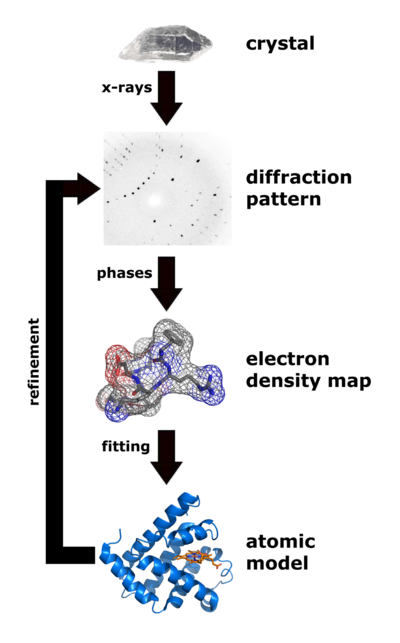X-ray crystallography
From Proteopedia
(Difference between revisions)
(adding content) |
(→See Also - adding content) |
||
| Line 11: | Line 11: | ||
==See Also== | ==See Also== | ||
| + | *[http://en.wikipedia.org/wiki/X-ray_crystallography X-ray Crystallography at Wikipedia] | ||
| + | |||
| + | *[[Quality assessment for molecular models]] | ||
*[[Resolution]] | *[[Resolution]] | ||
*[[R value]] | *[[R value]] | ||
| Line 16: | Line 19: | ||
*[[Highest impact structures]] of all time. | *[[Highest impact structures]] of all time. | ||
| + | *[[Nobel Prizes for 3D Molecular Structure]] | ||
==Notes & References== | ==Notes & References== | ||
<references /> | <references /> | ||
Revision as of 20:59, 18 May 2009

|
| Flow chart showing the major steps in X-ray protein crystallography. (Image from Wikimedia courtesy Thomas Splettstoesser. |
About 85% of the models (entries) in the World Wide Protein Data Bank were determined by X-ray crystallography. (Most of the remaining 15% were determined by solution nuclear magnetic resonance.) Protein crystallography remains very difficult, despite many recent advances. For every new protein sequence targeted for X-ray crystallography, about one in twenty is solved[1][2]. Publication of solved structures involves depositing an atomic coordinate file (PDB file) in the World Wide Protein Data Bank.
